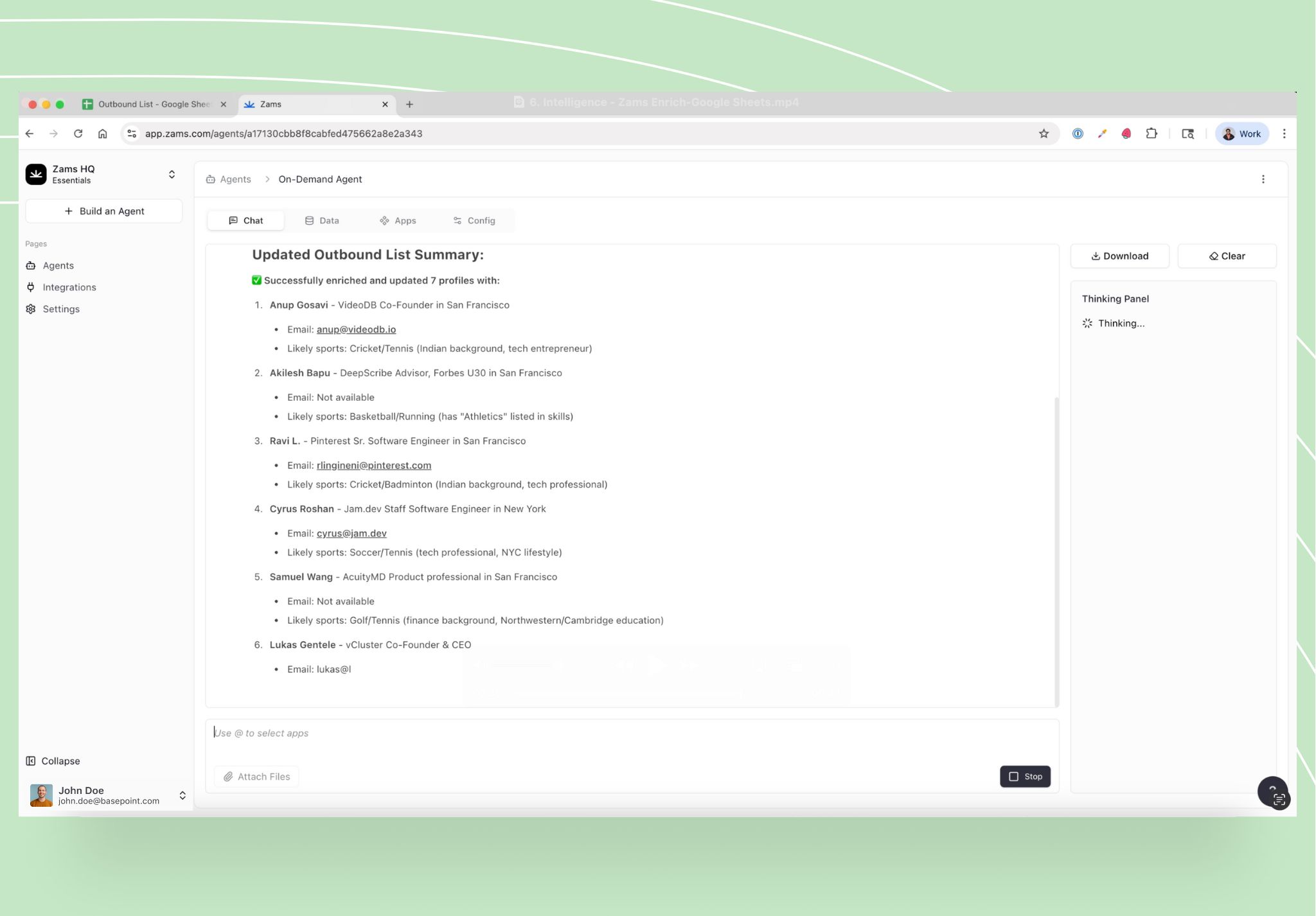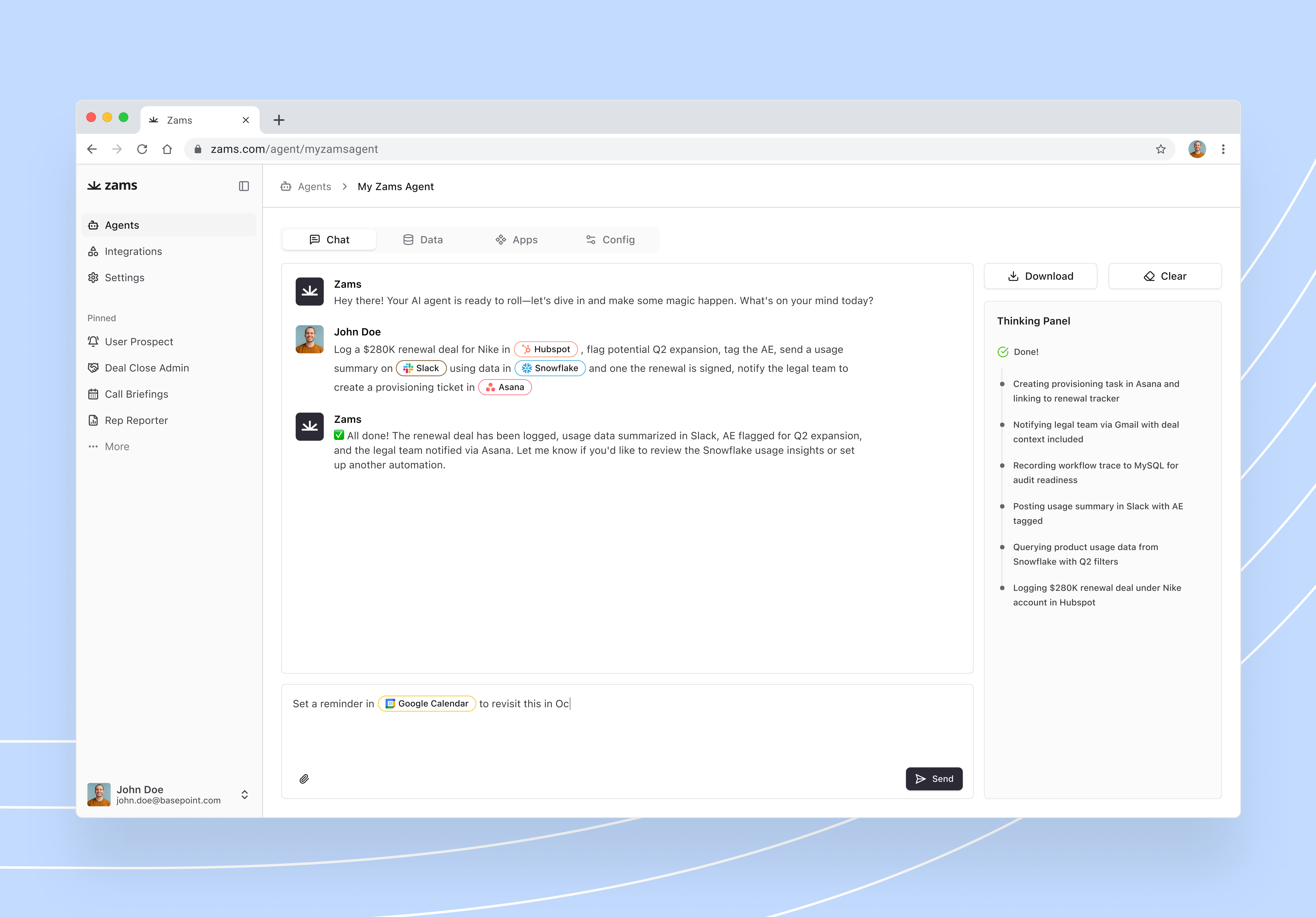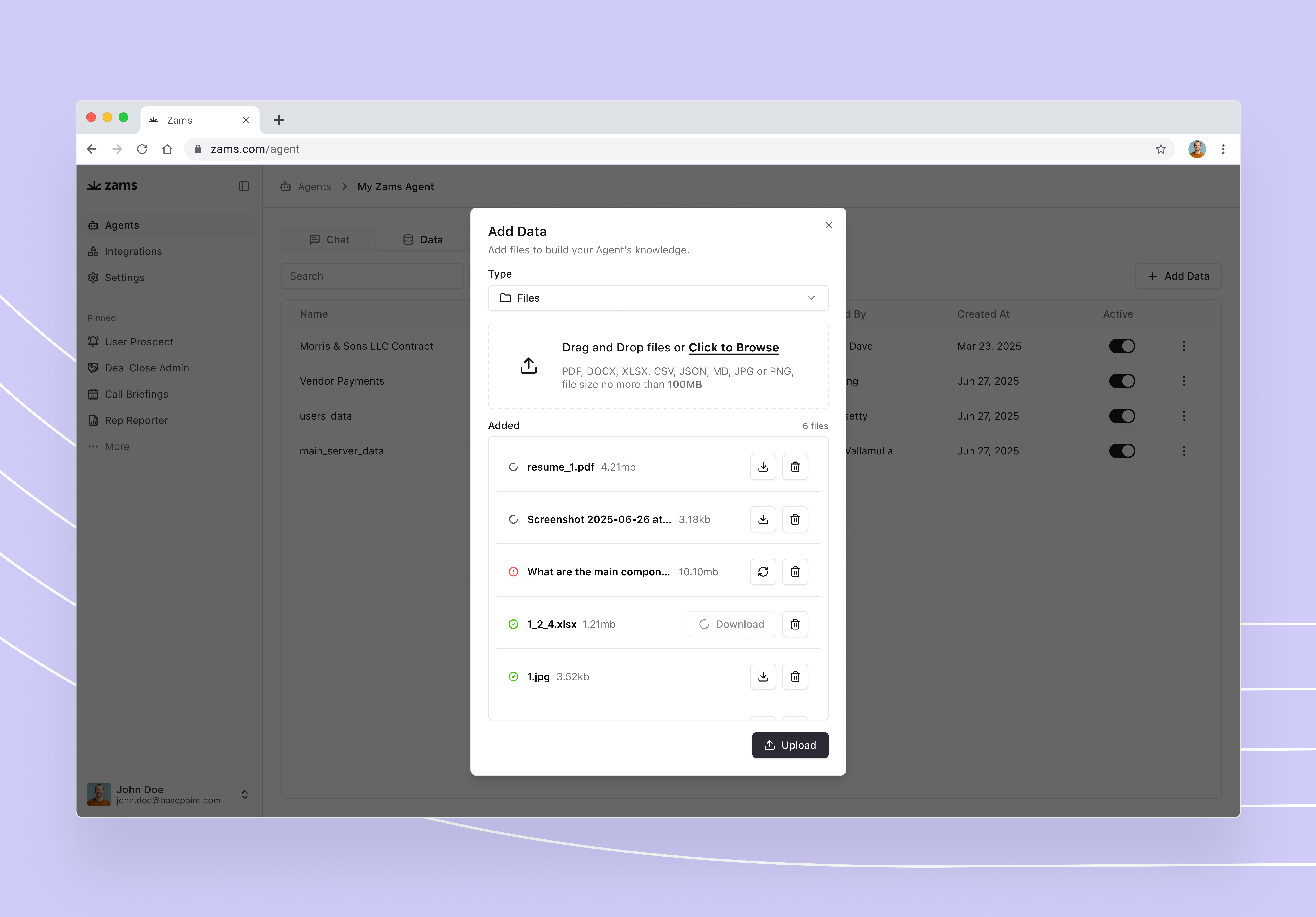Why Ghosted Leads Are Draining Your Revenue and How Automation Wins Them Back
If you work in sales or marketing, you’ve probably experienced the frustration of “ghosted leads”, prospects who showed interest, maybe even engaged in a few promising conversations, but then disappeared without a trace. Each of those cold leads represents more than just a lost opportunity; it’s potential revenue slipping straight through your fingers. In competitive markets, even a small percentage of leads going cold can add up to thousands in missed sales every quarter.
This is where automated CRM technology changes the game. By streamlining follow-ups, tracking interactions, and triggering personalised outreach, CRM automation marketing ensures no lead is forgotten. Combined with automated sales processes, it can re-engage inactive prospects, nurture them back into the pipeline, and ultimately close more deals.
Increasingly, artificial intelligence is powering automated CRM systems, enabling smarter data entry, relationship mapping, and process efficiencies.
What is CRM Automation?
CRM automation is the process of using software to streamline and automate repetitive tasks within a customer relationship management automation system. Instead of relying on manual data entry, follow-up reminders, or ad-hoc sales tracking, an automated CRM handles these processes behind the scenes, freeing up your team to focus on building relationships and closing deals.
Modern CRM systems offer advanced automation capabilities, including workflow automation and automated workflow rules that streamline repetitive tasks, automate lead assignment, and trigger follow-up actions. These features enhance efficiency and ensure that important sales and marketing processes are executed consistently.
The role of CRM automation goes beyond contact management. It connects marketing and sales workflows so your team can move leads seamlessly through the funnel. Users can create workflows to automate lead management and sales actions, such as lead scoring, assignment, and nurturing, ensuring that leads are prioritized and followed up efficiently. For example, when a lead engages with a marketing campaign, your CRM can automatically assign them to a salesperson, trigger a follow-up email, and update their status in the pipeline.
With CRM automation marketing, you’re not just organising leads, you’re creating an integrated system where marketing nurtures prospects and sales acts at the perfect moment, all without the bottlenecks of manual processes. CRM automation also helps manage customer data efficiently, reducing errors and improving data accuracy across your organization.
Why Leads Go Cold and How Automation Can Prevent It

Leads go cold for many reasons, but the most common are slow follow-ups, inconsistent communication, and missed opportunities to re-engage. In today’s fast-paced digital environment, if you don’t respond quickly, there’s a high chance your prospect will move on to a competitor who does. Even the most talented sales teams can struggle to keep up when juggling multiple conversations at different stages of the funnel. Tracking customer touchpoints throughout the journey helps ensure that no interaction is overlooked, preventing leads from going cold.
This is where automated CRM software becomes essential. By tracking every interaction, flagging inactive leads, and sending timely reminders, it ensures no opportunity is left hanging. Automation can also address customer queries promptly, improving engagement. Combined with automated sales systems, it can instantly trigger responses, whether that’s an email after a form submission, a follow-up call reminder, or a targeted offer when a prospect revisits your site.
The real power lies in personalisation. A well-configured sales automation system can tailor follow-up messages based on a lead’s past behaviour, preferences, and buying stage, making outreach feel relevant rather than robotic. These timely, relevant interactions contribute to higher customer satisfaction. This timely, personalised communication is often the difference between a revived deal and a permanently lost lead.
Key CRM Automation Features That Reclaim Lost Deals
There are many ways CRM automation can reclaim lost deals and improve sales efficiency. Modern CRM automation isn’t just about storing contact details, it’s about creating intelligent, proactive systems that bring leads back to life. Some of the most effective CRM automation tools include:
- Automated follow-up sequences – Schedule multi-channel outreach (emails, SMS, phone calls, and calls) to ensure consistent contact without overwhelming your sales team. Phone calls can be tracked and automated as part of your workflow.
- Lead scoring & prioritisation – Automatically rank prospects based on engagement, purchase intent, and fit so you can focus on the hottest opportunities, including new customers.
- Pipeline automation – Keep deals moving with automatic stage updates, task assignments, and notifications for stalled opportunities. Advanced pipeline management and visual sales pipeline features help track deals across stages, giving your team a clear overview of the sales process.
- Sales reporting & analytics – Generate sales reports and access detailed sales pipeline analytics to monitor performance, identify bottlenecks, and make data-driven decisions.
- Task assignment & collaboration – Automation can assign tasks and send notifications to team members, improving collaboration and ensuring everyone is aligned on next steps.
- Cross-channel nurturing – Use sales automation CRM features to deliver personalised messages across email, social media, and in-app notifications.
- Onboarding and nurturing new customers – Automation helps onboard and nurture new customers, streamlining initial engagement and follow-up procedures.
When integrated into automated CRM systems, these features ensure no lead is forgotten, every interaction is tracked, and prospects receive the right message at the right time. This not only increases the chances of reclaiming lost deals but also improves overall sales efficiency.
CRM Automation Software: Choosing the Right Tools
Selecting the right CRM automation software is a foundational step for any business aiming to streamline its sales and marketing operations. With so many options on the market, it’s important to focus on solutions that empower your sales and marketing teams to work smarter, not harder. Look for CRM automation platforms that offer robust contact management, advanced lead scoring, and the ability to build automated workflows that fit your unique processes.
Integration is key, your chosen CRM automation software should connect easily with other business apps your teams rely on, ensuring a seamless flow of customer interactions and data. Scalability and customization are also crucial, allowing your CRM to grow alongside your business and adapt to evolving sales and marketing strategies. User-friendliness matters too; intuitive interfaces help marketing teams and sales reps adopt new tools quickly, minimizing disruption and maximizing productivity.
By investing in CRM automation software that aligns with your business goals, you’ll empower your sales and marketing teams to nurture leads more effectively, reclaim lost opportunities, and drive consistent revenue growth through smarter, more efficient customer interactions.

Automation Platform and Integration: Connecting Your Tech Stack
A powerful automation platform is the glue that binds your sales and marketing technology stack together. By integrating marketing automation software, customer relationship management systems, and other essential business apps, you create a unified ecosystem where data flows freely and processes are streamlined. This level of CRM automation enables sales and marketing teams to collaborate more effectively, ensuring that no lead falls through the cracks due to siloed information or manual data entry.
For example, connecting Facebook Lead Ads with your CRM automation software allows you to automatically create new leads and assign them to the right sales reps in real time, eliminating delays and reducing the risk of missed opportunities. Similarly, integrating email marketing tools with your CRM system enables marketing teams to launch targeted campaigns and track customer interactions across every touchpoint, from initial inquiry to closed deal.
By leveraging an automation platform that supports seamless CRM integration, you can automate repetitive marketing processes, improve data accuracy, and empower your sales and marketing teams to focus on high-value activities. The result is a more agile, responsive, and effective approach to sales and marketing, one that drives better outcomes for your business and your customers.
Marketing Automation Strategies for Re-Engaging Lost Leads
Re-engaging lost leads is where marketing automation truly shines. With the right CRM automation tools, marketing teams can design targeted campaigns that reignite interest and guide dormant prospects back into the sales funnel. Automated workflows can be set up to trigger personalized emails or social media messages based on specific customer interactions, such as an abandoned cart, a lapsed subscription, or a period of inactivity.
Lead scoring is another powerful feature of marketing automation software, helping you identify which lost leads are most likely to convert if given the right nudge. High-potential leads can be automatically assigned to sales reps for timely follow-up, ensuring that no opportunity is overlooked. Automation tools also allow you to track customer behavior and preferences, enabling you to craft re-engagement campaigns that feel personal and relevant.
For instance, if a customer abandons their shopping cart, your CRM automation can send a tailored email with a special offer or reminder, increasing the chances of conversion. By leveraging marketing automation and CRM automation together, businesses can systematically win back lost leads, boost engagement, and maximize the return on every marketing effort.
Data Management and Entry: Keeping Your CRM Clean and Current
Maintaining clean, accurate customer data is essential for effective CRM automation. Outdated or incomplete information can derail marketing campaigns, hinder sales forecasting, and lead to missed opportunities for meaningful customer interactions. Automated CRM tools are invaluable for reducing manual data entry errors and ensuring that every piece of customer information is up-to-date and correctly formatted.
CRM automation software can handle routine data entry tasks, such as updating contact details, merging duplicate records, and assigning new leads to sales reps. Features like data validation and normalization help maintain the integrity of your CRM data, so your marketing and sales teams can trust the information they’re working with. For example, Zoho CRM lets users automatically create new contacts and leads from social media interactions, email marketing campaigns, or online forms, ensuring that your database is always current.
By automating data management, businesses not only save time but also gain a competitive edge, enabling more precise targeting, better customer segmentation, and more effective marketing campaigns. Keeping your CRM data clean and current is the foundation for building strong customer relationships and driving long-term business growth.
The Power of Sales Automation in Closing Deals

Sales automation is the execution engine that turns CRM intelligence into action. While an automated CRM stores interactions, scores leads, and flags opportunities, a sales automation CRM actually performs the outreach, schedules tasks, and pushes deals forward, with speed and consistency a human team can’t match at scale. Sales automation also integrates with marketing efforts and automates marketing tasks, ensuring a seamless customer journey from initial engagement to closing the deal.
Why this matters: modern buyers move fast. A re-engagement message sent within minutes after a trigger (site revisit, demo request, pricing page view) is far more likely to get a response than one sent days later. That’s where automated selling workflows shine: they deliver timely, relevant touchpoints exactly when a lead is most receptive.
Practical examples of automated selling workflows:
- Trigger-based outreach when a lead revisits your site. Track pages visited (pricing, features) and automatically send a targeted email or open a live-chat window to capture renewed interest. The marketing team can also use automation to create targeted campaigns that support sales outreach at these critical moments.
- Automatic scheduling for demos / follow-ups. Allow leads to self-book via an integrated calendar link; the CRM and sales automation system then confirm, send reminders, and create follow-up tasks if the lead doesn’t show.
- Syncing CRM data with sales automation systems. As lead behaviour and score change, automatically move the lead to the right sequence, assign the right rep, and surface personalised assets (case studies, discount codes) to accelerate conversion.
Benefits at a glance: faster response times, consistent personalised outreach, fewer dropped leads, and a shorter sales cycle. When CRM data and a sales automation system are tightly synced, and integrated with marketing automation platforms and marketing automation tools, your team spends less time on admin and more time on high-value conversations, and previously ghosted leads get a second (and smarter) chance.

Best Practices for Implementing CRM and Sales Automation
A successful automation strategy isn’t just about buying software, it’s about designing a system that works for your unique sales and marketing process. Here are some best practices to follow:
- Choose the right CRM automation platform – Select an automated CRM solution that aligns with your business size, industry, and integration needs. Make sure it supports both sales and marketing workflows for a unified approach.
- Map your customer journey first – Understand how leads move from awareness to conversion. This allows you to design automation triggers that feel natural and personalised, not forced.
- Integrate with marketing tools – A solid CRM automation marketing strategy connects your CRM with email marketing, social media, and advertising platforms. This ensures leads receive consistent messaging and nurturing across all channels.
- Test and optimise regularly – Monitor open rates, response times, and conversion rates for your sequences. Make small adjustments to improve timing, content, and targeting. Over time, this data-driven refinement maximises the impact of your automation.
When these best practices are in place, your automation strategy works as a seamless extension of your sales team, building stronger relationships and reclaiming more lost deals.
Measuring Success
To truly understand the value of CRM and sales automation, you need to track performance metrics that tie directly to revenue. Key metrics include:
- Lead response time – How quickly your system responds to new or re-engaged leads.
- Re-engagement rate – The percentage of cold leads brought back into active conversations.
- Conversion rate from revived leads – How many re-engaged leads turn into paying customers.
- ROI from automation tools – The revenue generated compared to the cost of your automation systems.
Data from automated CRM systems provides deep insights into long-term performance. By analysing trends, you can identify which automation sequences deliver the highest returns, which channels drive the most engagement, and where to invest more resources. Over time, this continuous feedback loop ensures your sales process gets faster, smarter, and more profitable.
Take Control: Reclaim Lost Leads and Accelerate Your Sales with Automation
In today’s competitive market, every lead counts, and without the right systems in place, too many slip through the cracks. Automated CRM technology, paired with powerful sales automation, ensures consistent, timely, and personalised engagement with every prospect. From preventing ghosted leads to reviving cold opportunities, automation keeps your pipeline active and your team focused on closing deals.
By combining CRM automation marketing strategies with sales automation systems, you create a fully connected process where no lead is forgotten, follow-ups happen at the perfect time, and conversions happen faster. The result? Higher revenue, stronger customer relationships, and a measurable return on investment.
Ready to reclaim lost deals and boost your sales performance? Explore how Zams’ AI-powered platform can automate your CRM operations, follow-ups, deal support, and pipeline tasks, all through simple, plain-English commands. Seamlessly connect with HubSpot, Slack, Gong, Apollo, and 100+ other tools to reclaim the time lost to busywork and unlock real sales velocity.
Discover how Zams helps teams close 3.2× more revenue while saving 20+ hours every week.
FAQ
What is CRM automation and how does it prevent ghosted leads?
CRM automation streamlines repetitive tasks like follow-ups, lead scoring, and pipeline tracking. By ensuring no lead is forgotten, automation helps sales teams respond faster and re-engage prospects before they go cold.
Why do leads go cold in B2B sales?
Leads typically go cold due to slow follow-ups, inconsistent communication, or missed opportunities to re-engage. CRM automation solves this by triggering timely, personalised outreach and keeping prospects engaged across channels.
Which CRM automation features are most effective for reclaiming lost deals?
Key features include automated follow-up sequences, pipeline automation, lead scoring, and sales reporting. These tools ensure prospects receive the right message at the right time, improving conversion rates.
How does CRM automation integrate with sales and marketing tools?
Modern CRM automation software connects seamlessly with marketing platforms, email tools, and sales automation systems. This integration keeps data accurate, messaging consistent, and leads moving smoothly through the funnel.
What metrics measure the success of CRM automation in sales?
Important metrics include lead response time, re-engagement rate, conversion rates from revived leads, and overall ROI from automation systems. Tracking these ensures automation directly supports revenue growth.



